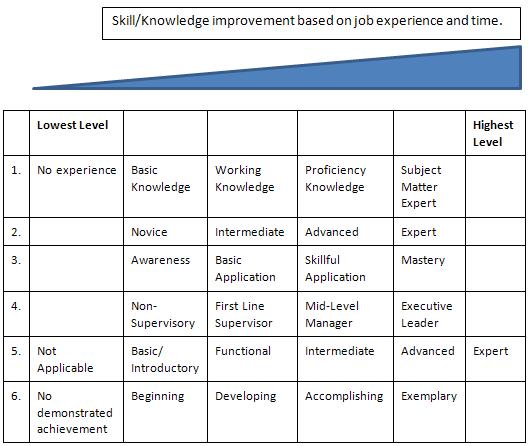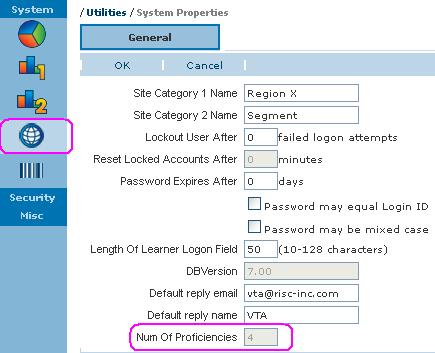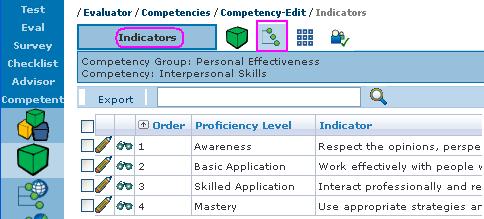This is the second article in a three-part series on Proficiency Levels and Proficiency Indicators.
Examples of Proficiency Level Terminology
The table below contains terms used by organizations to label their Proficiency Levels.
Before deciding on the number of Proficiency Levels for your organization, consider commercial or publically available models and/or a pilot study to determine which number works best for your organization’s competency system goals. A wider range of proficiency levels may be more difficult to define up front but may allow for one competency to apply across multiple roles where a narrow range of proficiencies may drive the need for more competencies.
Moving on from the thought process above to data entry below, the following screen shots and accompanying descriptions describe the order of activities performed in Back Office.
Define Number of Enterprise Proficiency Levels
One of the first decisions to make when setting up your VTA system is the number of Proficiency Levels to set. The VTA system allows a scale from one to six that is set for the Enterprise in VTA Utilities. Once the number is determined, it can NOT be changed without cleanup assistance from RISC as any change to the number of Proficiency Levels would make existing competency-related data invalid.
Add Proficiency Level Names and Descriptions
Once the number of enterprise Proficiency Levels is set, the user-defined names and descriptions must be entered in Evaluator for each point on the scale as seen in the screen shot above.
Define Proficiency Indicators for a Competency
When a Competency has been entered in Evaluator, its Proficiency Indicators are defined. If Proficiency Levels define the acquisition of a competency by incremental levels (e.g., from simple [least experienced] to complex [most experienced]), Proficiency Indicators provide an assessor the “how-do-I-know” criteria to determine if a student has achieved a certain Proficiency Level or not.
Note the absence of an “Add” button on the grid above as the number of Proficiency Levels is set in VTA Utilities.
View Proficiency Indicators for a Competency
The List Competencies Report is especially useful for: (a) viewing all the Proficiency Indicators associated to a Competency and (b) validating the accuracy and currency of the Indicators with the subject-matter expert or focus group that first developed them.
Summary
Finding the number of Proficiency Levels that best fits your organization’s competency system goals and then writing clear, concise, observable/measurable Proficiency Indicators makes your assessments credible and defendable from bias which, in turn, gives both management and employees confidence that the results do indeed build competent performance across the organization.
Continue on to to Part 3 – Site-Specific Indicators for those who have multi-site VTA installations.





